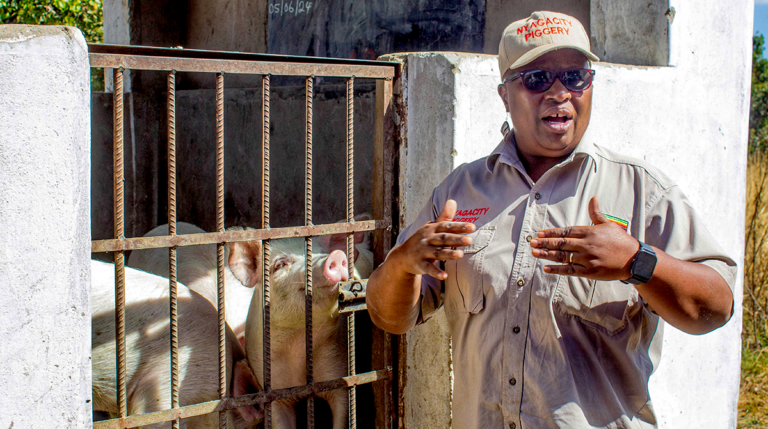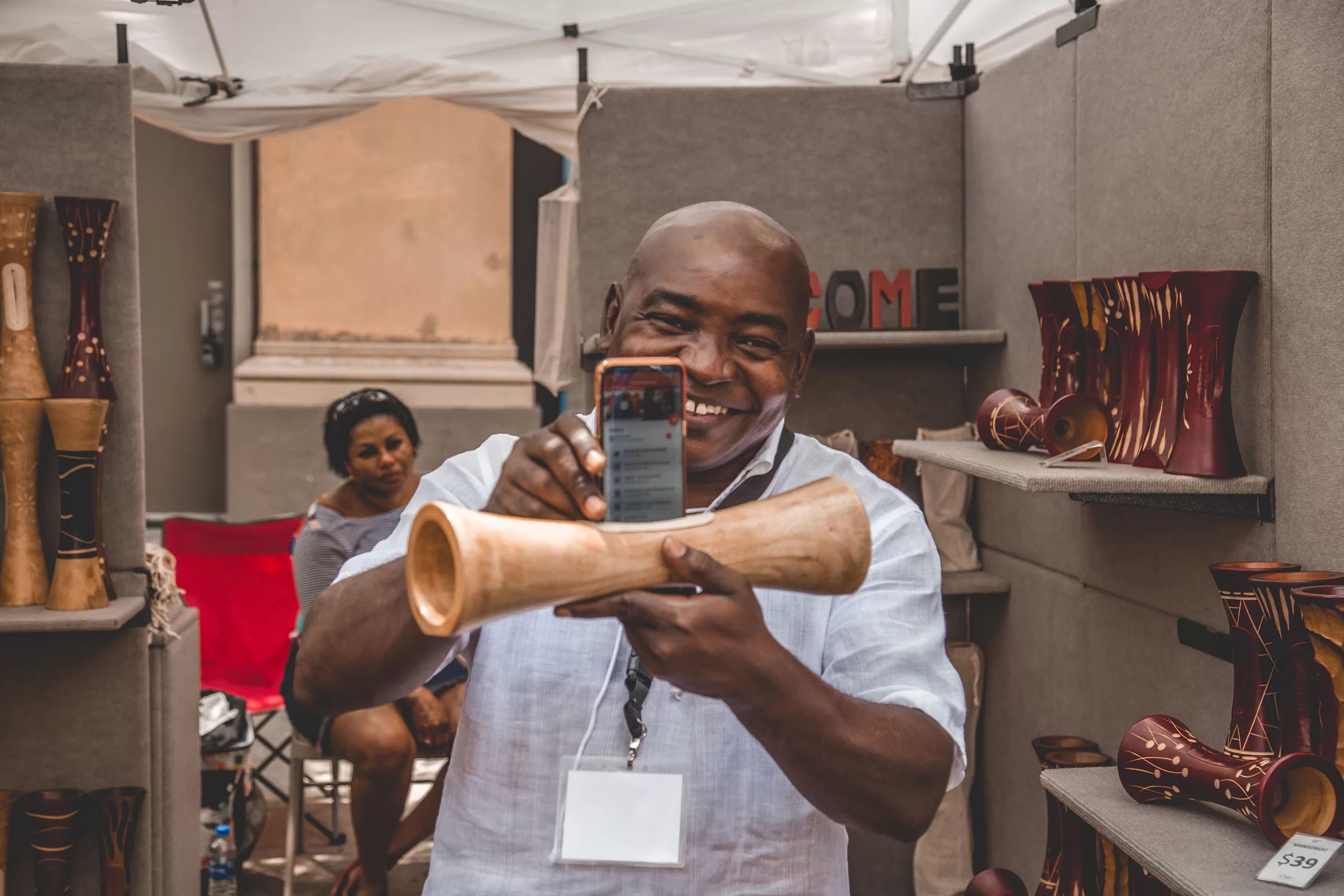A team of researchers at South Africa’s Rising Star cave system have discovered new evidence indicating that Homo naledi, an extinct human species, intentionally buried their dead and created rock art. These findings suggest that they possessed advanced cognitive abilities, a practice usually associated with Homo sapiens.
Edith Magak, bird story agency
New evidence by researchers in the Rising Star cave system in South Africa shows that an ancient, small-brained human cousin may have buried its dead and carved symbols into cave walls as meaning-making, behaviours considered exclusive to large-brained hominins.
These short-statured species are thought to have lived in Southern Africa between 335,000 and 241,000 years ago.
“We are facing a remarkable discovery here of hominids, nonhumans with brains a third of the size of humans… burying their dead, using symbols, and engaging in meaning-making activities,” said anthropologist Lee Berger of the University of the Witwatersrand at a press conference on Monday (June 5).
Homo naledi, shared some similarities with humans, like walking upright and manipulating objects by hand. But they had smaller heads, a shorter stature, and were thinner, though powerfully built.
“This species persisted and survived alongside other species that were much more human-like, including our own early members of our species, Homo sapiens,” said John Hawks from the University of Wisconsin–Madison.
Scientific papers on the burials, symbols, and interpretation of the findings have been accepted and will be published in eLife. They are currently available in preprint via BioRxiv.
Homo naledi is a new addition to the family tree of hominins, which includes our direct ancestors and other extinct relatives who walked on two legs.
Berger’s team made its first discovery in Rising Star in 2013 after a tip from local explorers led them to the Rising Star cave system near Johannesburg, where they uncovered the bones of at least 15 individuals who had lived about 300,000 years ago.
“The biggest find from our excavations in 2013 and 2014 was a skull of H. naledi that sat within a complicated array of bones and bone fragments: leg bones, arm bones, pieces of hands and feet. Our team recovered more than 1,500 fossil specimens, nearly all of which relate to one population of this ancient species,”
The chamber where the fossils were found was extremely narrow, requiring Berger to lose 55 pounds (25 kgs) in order to traverse the chamber himself, in 2022.
“It was the most awful and wonderful experience in my life. I almost died coming out of there, but it was obviously worth it to make some of these discoveries,” said Berger.
Now, the research team has discovered further remains of Homo naledi adults and children estimated to be younger than 13 years of age that were laid to rest in the feotal position within cave depressions and covered with soil, which suggests intentional burial of the dead.
“Also, importantly, you can see that this burial has depth, demonstrating it’s not a body that died in a depression or hole. It was a whole body that was covered in dirt and then decayed within the grave itself, in part demonstrating that it was buried at the time as a whole flesh entity, but not by some dramatic collapse or being washed in,” Berger said, commenting on a burial site.
The interments predate the earliest known Homo sapiens burials by at least 100,000 years, making the Rising Star burials some of the most ancient in the hominin record and indicating that burials might not have been limited to Homo sapiens or other hominins with larger brain sizes.
The scientists also found several symbols engraved on the cave walls, which could be 241,000 to 335,000 years old and will be further tested.
These symbols, which include deeply impressed cross-hatchings and other geometric shapes, were found on surfaces that appeared to have been prepared and smoothed.
The lines were made repeatedly by carefully passing a pointed or sharp tool through the grooves.
“What we can say is that these are intentionally made geometric designs that had meaning for Naledi. That means they spent a lot of time and effort and risked their lives to engrave these things in these places where they’re burying bodies,” said Agustín Fuentes, National Geographic Explorer and on-site biocultural specialist.
“I think we are facing a remarkable discovery here of hominids, nonhumans with brains, a third the size of living humans slightly larger than the chimpanzee that we are attributing to burying their dead, something previously only found in large brain hominids prior to this as well as making meaning-making symbols on the wall,” said Berger.
The scientists also found bits of charcoal, burned bones and soot on the cave walls near the fossils. They proposed that Homo naledi used glowing coals to light their way into the caves and brought wood or other fuel to burn fires. They might have cooked the animals as a meal or ritual.
“That would mean not only are humans not unique in developing symbolic practices, but may not have even invented such behaviours.”
However, not all researchers agree with Berger and the team’s findings.
“The problem with the rock art at Rising Star Cave is that it’s undated. To imply any link with Homo naledi requires firm dates…..In the absence of dating, it’s simply spurious to claim the engravings were made by Homo naledi, rather than by another species (and potentially at a much later date),” an article at The Conversation authored by four archaeologists, based in Australia, Kenya, Spain, and Germany reads.
As for the burial of the dead, the quartet note that there are “rigorous criteria agreed upon by the scientific community for identifying intentional human burial.” But, they argue, the Homo naledi evidence does not meet this standard.
The research team is continuing in its quest to better understand Homo naledi, including how old the species is and if any DNA is preserved in the bones found in the cave.
bird story agency































![Egypt, Algeria and Libya set to lead world's ‘green steel’ revolution [Graphics:Hope Mukami]](https://devage.co.zw/wp-content/uploads/2016/03/Egypt_Algeria_and_Libya_set_to_lead_world_s_green_steel_revolution_01-300x211.webp)














































![Egypt, Algeria and Libya set to lead world's ‘green steel’ revolution [Graphics:Hope Mukami]](https://devage.co.zw/wp-content/uploads/2016/03/Egypt_Algeria_and_Libya_set_to_lead_world_s_green_steel_revolution_01-768x540.webp)















































![Egypt, Algeria and Libya set to lead world's ‘green steel’ revolution [Graphics:Hope Mukami]](https://devage.co.zw/wp-content/uploads/2016/03/Egypt_Algeria_and_Libya_set_to_lead_world_s_green_steel_revolution_01-scaled.webp)


















Leave a Reply
You must be logged in to post a comment.